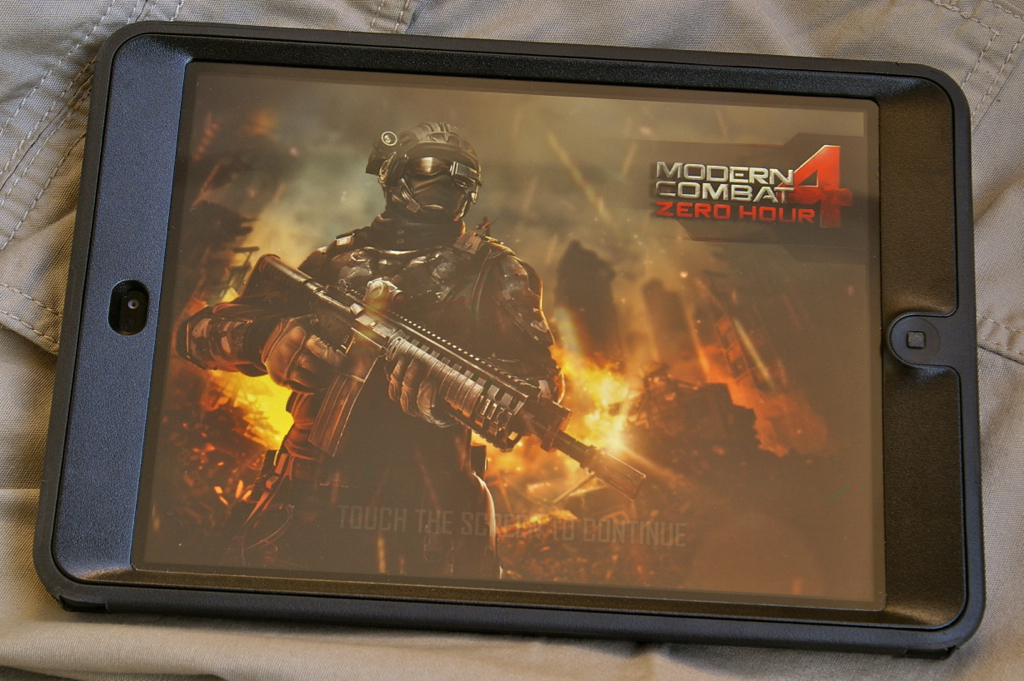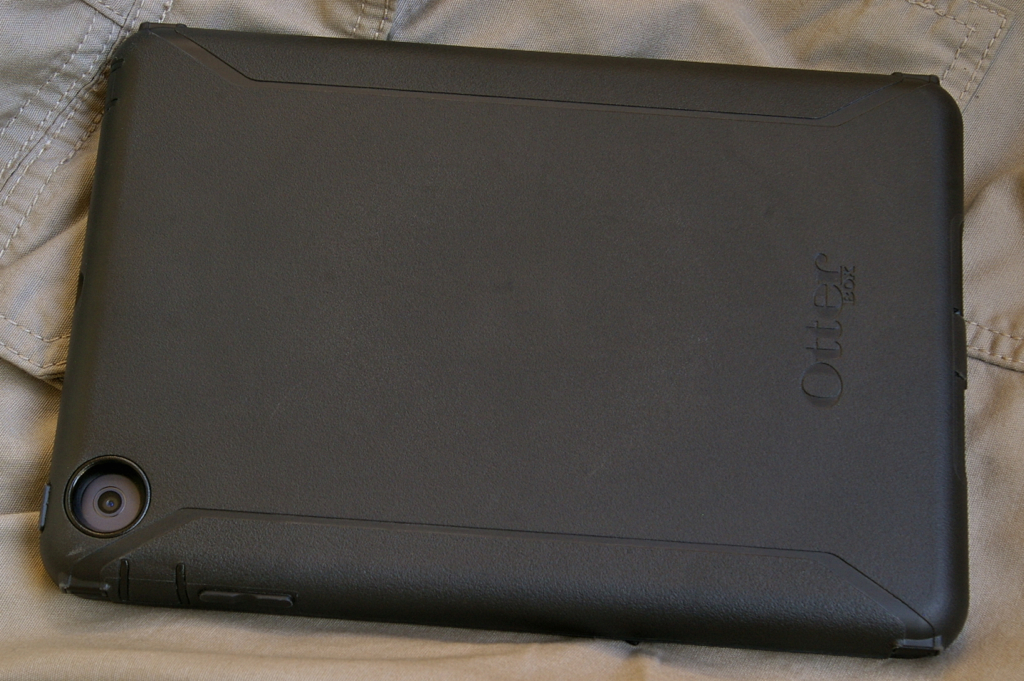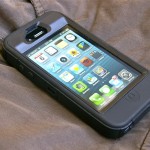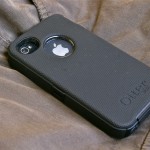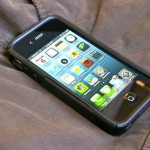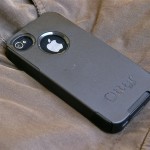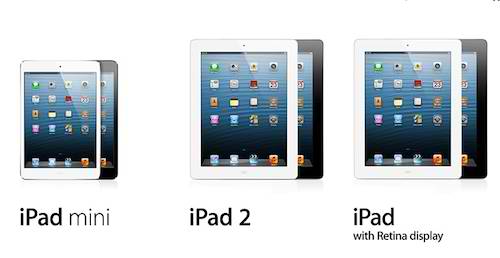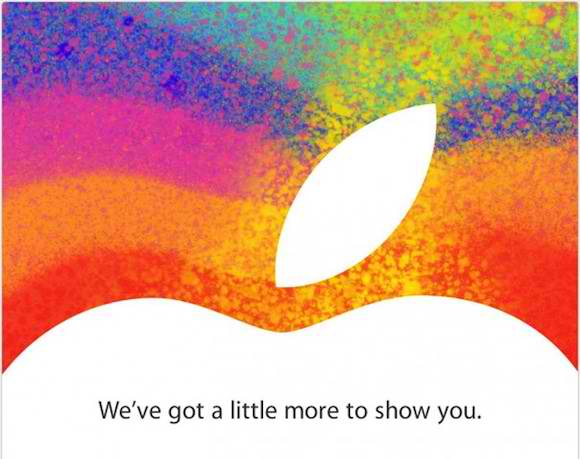I wanted to let Jeanne start using her new iPad mini already. But not without a case. I like OtterBox products (and their clones) so I looked around but I found only the Apple Smart Cover (expensive and not very protective) and some generic cases with built-in covers (not very protective nor flexible). So, for a change, I ended getting a genuine Otterbox case.
The Otterbox Defender for the iPad mini is a high-risk heavy-duty case. The case is composed of three major pieces: a silicone outer jacket, a 2-piece poly-carbonate inner shell, and a cover/stand. The poly-carbonate inner shell locks together and sandwiches the iPad mini. It includes a built-in screen protector. The silicon jacket then wraps around the inner shell and covers the back and the sides. The material is a stiff type of silicone rubber that OtterBox uses in its new casings.
The buttons have push-through covers that are made of the same stiff material. They are definitely stiffer but still reasonable to press. The microphone port, Lightning port, and silent switch are also covered by stiff flaps but are easily opened with a fingernail. The flaps are generously sized and the ports should be easily accessible to most accessories. There are deep-set cutouts for the front and back cameras.
The whole case fits the iPad mini snugly and makes it look very rugged and like it could bounce off the floor. Perfect for a tablet meant to be carried around and used by Jeanne.
